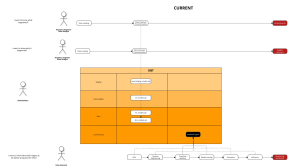Benjamin Franklin (my cat’s name), Leonardo Da Vinci, Nikola Tesla, Eninstine, Oppenheimer, Hunter S. Thompson. People like these have always been my heroes. Trying to figure out what creates that level of genius has been something that I have been interested in for as long as I have been a leader.
I recently read Collective Genius and it gave me quite a bit of perspective around what is really behind innovation. These are great innovators, no doubt, but it takes a unique set of events and a strong sense of community to put innovation into motion.

Most people would have simply started over, but Fleming switched his focus from the bacteria to the fungus itself. First, identified the mold and the bacteria-killing substance, which he called “penicillin,” then he tested it on other bacteria cultures. Seemingly in a single stroke, Fleming had created the new field of antibiotics.
That’s how most people see innovation. A flash of brilliance and Eureka!, a new world is born. The truth is far messier. In fact, it wasn’t until 1943—nearly two decades later—that penicillin came into widespread use and only then because it was accelerated by the war effort. We need to discard old myths and deal with innovation as it really happens.
The Eureka! Myth
To put Fleming’s discovery in context, it’s helpful to look at the curious case of Ignaz Semmelweis, who pioneered the practice of handwashing in maternity wards, which virtually eliminated the scourge of childbed fever in the hospitals he presided over. Yet Semmelweis gained neither fame nor fortune, but rather the scorn of his colleagues.
The problem was that in the 1850s Semmelweis’s ideas about handwashing conflicted with the prevailing miasma theory (bad air) of the day. So hand washing simply didn’t make any sense to the medical profession at the time.
It was only after Semmelweis’s death in an insane asylum in 1865 (ironically of an infection he caught there), that Louis Pasteur, Joseph Lister, and Robert Koch brought the germ theory of disease into wide acceptance. In fact, Fleming’s work can be seen as a direct consequence of those earlier pioneers who established that bacteria cause disease.
So Fleming’s discovery was far from an isolated event. He knew from earlier scientists that bacteria were important and that’s why he recognized the significance of the bacteria-killing mold. If he had discovered the same thing 70 years earlier, he would have most probably met a similar fate to Semmelweis.
Engineering A Solution
Fleming was a gifted biologist, but a poor communicator, and when he published his results in 1929, few took notice. He was also not a chemist and so was unable to study the molecule in any detail. So instead of changing the world, the world’s first antibiotic remained buried as an obscure finding in a scientific journal.
It wasn’t until 1935, a decade later, that Howard Florey and Ernst Chain, discovered Fleming’s paper, immediately understood its importance, and developed a method to produce penicillin in quantity. They first began experimenting in mice, then humans, and saw incredible results. Clearly, this new miracle drug had the potential to transform medicine.
Yet still, to make an impact, penicillin had to be produced in massive quantities, something that was far out of the reach of two research chemists. Florey reached out to the Rockefeller Foundation which provided further funding for research into new fermentation methods so that the drug could be mass-produced.
By 1943, with World War II raging, the War Production Board enlisted 21 companies to produce supplies for the war effort, saving countless lives and ushering in the new age of antibiotics. Fleming, Florey, and Chain received the Nobel Prize for Medicine in 1945.

Transforming Business Models
Penicillin, like so many other important innovations like the Internet and GPS, benefitted greatly from government support. Most entrepreneurs, however, have to forge their own path and it’s not always clear where the opportunity lies. That was exactly the problem that Chester Carlson had to overcome.
Self-taught and brilliant, Carlson worked for years tinkering with his invention even while holding down a day job and going to law school at night. When his wife got tired of the explosions he made mixing chemicals in the kitchen, he moved his work to a second-floor room in a house his mother-in-law owned.
After working on it for over a decade, he finally teamed up with the Haloid Corporation, which helped him refine his product, but it still cost nearly ten times more than competitive machines. They tried to interest the great companies of the day—Kodak, IBM, and GE—but all demurred. There just didn’t seem to be a value proposition that would justify the cost.
Then Joe Wilson, the President of Haloid, had a billion-dollar idea. Instead of selling their machines, why don’t they lease them? With this new business model, Carlson’s innovation took off and the company soon changed its name to the Xerox Corporation, which dominated the copier industry for decades.
Innovation Is Never A Single Event
Look at any significant innovation and the myth of the lone genius and the “eureka moment” breaks down. A big idea is never enough, but needs to be developed into a viable solution and then adopted widely enough to make an impact. Innovation is never a singular event, but a process of discovering insights, engineering solutions, and transforming fields and industries.
So while we sometimes like to believe that some people are innovators and others are not, the truth is that everyone has a potential role to play: scientists and engineers, marketers and accountants, salespeople and production specialists. That’s why we need to treat collaboration as the ultimate competitive advantage, especially today when the problems we need to solve are so
much more complex than in the past. We need to radically rethink how we approach innovation.
Uniquely Positioned to Discover Innovation
Innovation doesn’t just happen it is fostered and nurtured. As in innovation and everything else, there is a bit of luck involved in discovering innovation. As we work through business challenges and examine companies’ business structures through data, we find an enormous amount of information about how success and efficiencies are being viewed. We have a rare opportunity to notice the outliers and rare indicators of true innovation within other companies. We also put communication and collaboration at the forefront of our organization to highlight innovative thinking. We need to create a culture that inspires teamwork rather than just individual accomplishment. Great innovation happens when a diverse set of skills are integrated to effectively solve problems. Through strong communication, information gathering, and data exploration, we can take the luck out of innovation and turn it into a science.
- What the heck is data analytics? Explain it like I’m five. - June 8, 2022
- Best Practices for Managing Data Access to BigQuery - October 11, 2021
- How PE firms can turn data science into a competitive advantage - October 11, 2021



